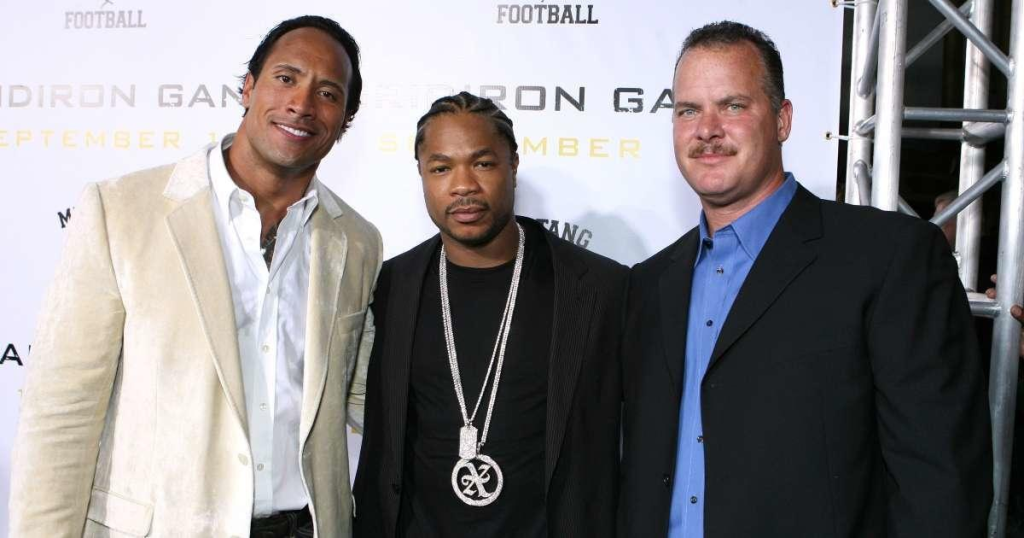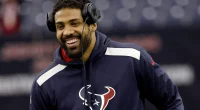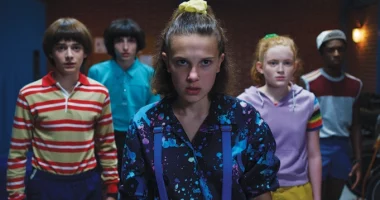The sports drama “Gridiron Gang,” directed by Phil Joanou, centres on a juvenile correctional facility in Los Angeles, California. Dwayne Johnson stars as Coach Sean Porter, a dissatisfied employee of the Kilpatrick Detention Center who is unable to help the juvenile inmates in the 2006 film. His plan to improve the lives of the local youth involves forming a football team to give them a sense of community. In addition, the coach thinks the teens will learn the self-discipline and accountability they need to make positive changes in their life thanks to their involvement in the game.
The youngsters are sceptical at first but end up having a great time. However, they face many challenges and setbacks on their route to success. In sum, ‘Gridiron Gang’ is an inspiring adventure that perfectly captures Dwayne Johnson in his natural habitat. Because of the film’s motivational storyline, which keeps viewers engaged and pulling for the protagonists, backstory information is highly sought for. Is the narrative based on actual events, and where did the idea come from? Ok, well, here’s what we know about it, too!
Is There Any Truth to the Gridiron Gang?
The events depicted in “Gridiron Gang” did indeed occur. Based on the true story of the 1990 football season for the Camp Kilpatrick varsity squad in Los Angeles County. As it turns out, the squad was also the subject of a documentary that won an Emmy in 1993 and carries the same name as the Dwayne Johnson film. There are, however, several discrepancies between the events shown in the film and the actual ones.

The movie’s portrayal of Camp Kilpatrick’s athletics programme is inaccurate; the establishment of a basketball team dates back to 1986. In 1988, when Sean Porter first became engaged with the programme, he helped organise a small football squad of only eight players. By 1990, with eleven members, the squad was strong enough to compete throughout an academic year against other schools. As depicted in the film, this was not always a simple process.
The Mustangs struggled to find genuine opponents to play with them throughout the season, especially in their inaugural campaign. Nevertheless, certain institutions bought into Kilpatrick’s vision and were willing to work with them. After the first season, more and more schools asked to play the Mustangs because they were impressed with the team and Kilpatrick as a whole.
The sequence where the Mustangs cry after their first loss is based on a genuine story and is one of the sports film’s most beautiful and emotional parts. In addition, the sequence does a good job of giving the spectator a sense of the teenagers’ humanity. Phil Joanou “wanted to demonstrate that the youngsters truly did cry after losing their first game.” Dwayne Johnson reportedly told Hollywood that people acted “like infants” after the loss of a loved one because they lacked the emotional maturity to cope with it. Another scenario with real-world roots is when the Mustangs bring flowers to the coach when his mother dies in the middle of the season.
Although Sean Porter did not believe for a second that his squad would win a single game in the real world. I thought I would be a complete loser. The youngsters in this neighbourhood never, ever got together to play. It’s not about winning and losing; it’s about accepting this challenge,” Porter told Johnson, and the actor then told the Philadelphia Inquirer. The actor studied the 1993 documentary extensively to learn about Porter’s persona in order to play him convincingly in the film.

Even though he and assistant Coach Malcolm Moore spent a day filming, the real-life coach reportedly did not divulge a great deal of knowledge. This meant that Johnson would hold dear any information he did manage to impart to him. Some of the guys, like Junior Palaita, had a troubled past, and Porter was concerned about their safety during filming. Even though the latter had moved past his problems and was now contributing to society, he worried that he may be rejected by his peers because of the portrayal of his past in the film.
Some Kilpatrick Mustangs were finishing up their schooling and two were apparently already behind bars when the film was released. While the numbers aren’t perfect, they do show that Porter’s strategies were successful, which is why the 1990 Mustangs have been the focus of not one but two films. In this way, “Gridiron Gang” accurately depicts real-life occurrences and offers an uplifting and motivational tale.
Sharanya is a professional content writer for Landscape Insight. With a passion for writing for celebrities in the entertainment industry, she brings a unique perspective to her writing. Her work showcases her expertise in pop culture, making her a valuable asset to the team. In her spare time, she likes spending time with her family. You can reach Sharanya at – [email protected] or on Our website Contact Us Page. My Instagram handle is teen-rose434








